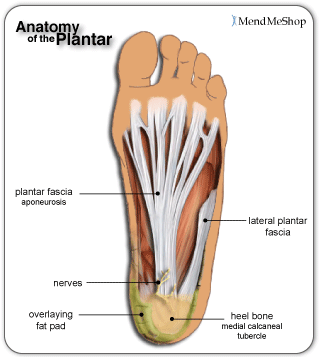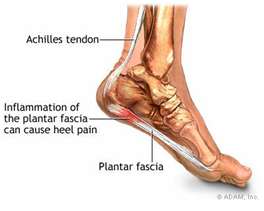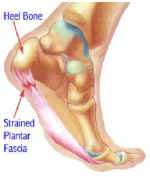Plantar Fasciitis



What is it?
Plantar facilities is a condition involving pain at the plantar fascia, which stretches from the calcaneus’s to the proximal phalanges on the plantar surface of the foot. While – it is implies that this is an inflammatory condition, it is probably related to the degeneration of collagen rather than to chronic inflammation.
How is it recognized?
Plantar fasciitis is acutely painful after prolonged immobility. Then the pain recedes but comes back with extended use. It feels sharp and bruises like, usually at the anterior calcaneus’s.
Signs and Symptoms
Plantar fasciitis follows a distinctive pattern that makes it easy to identify. It is acutely painful for the first few steps every morning. Then the pain subsides or disappears altogether but becomes a problem again with prolonged standing, walking or running. A sharp bruised feeling either just anterior to the calcaneus’s on the plantar surface or deep in the arch of the foot often marks this disorder.
What happens?
The Plantar fascia is a tough, thick band of connective tissue that supports the medial longitudinal arch of the foot. It is thickest in the middle of the band and thinner on the medial and lateral aspects. It is vulnerable to damage through anatomic and repetitive biomechanical forces. Being overweight can predispose someone to plantar fasciitis, as can wear shoes without good arch and lateral support. Unequal leg length and flat or pronated feet are associated with this problem, as are jammed arches. Very tight calf muscles are also contributing factors, especially for runners.
The pain that accompanies plantar fasciitis occurs when the foot has been immobile for several hours and then used. The fibers of the fascia begin to knit together during rest and are irritated again each time the foot goes into even gentle weight-bearing dorsiflexion.
Is massage indicated or contraindicated?
Plantar fasciitis indicates massage. Bodywork can help release tension in the deep calf muscles that put strain on the plantar fascia: it can also help to affect the quality of collagen at the site of the injury.
Warming and massaging the foot and lower leg before getting out of bed can make the tissue more flexible. Shoe inserts can keep the foot from going into deep dorsiflexion: these should be in all shoes, including bedroom slippers.
Deep tissue massage: Indicated when subacute: work with crural fascia and compartments, then muscle and tendons to foot. Use ROM at ankle and toes.
Swedish massage indicated.

